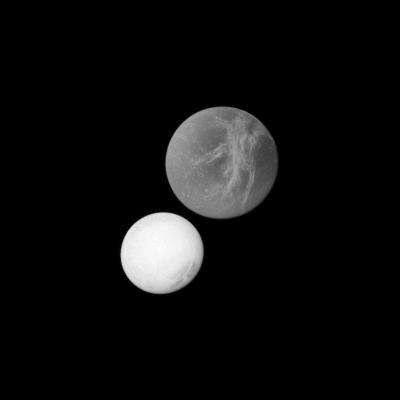Moon Illusion tricks the eye

We’ve all experienced the Moon Illusion, where our own full Moon looks bigger when seen on the Earth’s horizon. But how about this illusion where you can’t really tell which of these two moons of Saturn is actually bigger, or which is closer, as seen by the Cassini spacecraft? Here, Dione, top right, appears closer to the spacecraft because it is larger than the moon Enceladus, lower left. However, Enceladus was actually closer to Cassini when its visible light, narrow-angle camera took this image.
Dione (1,123 kilometers, or 698 miles, across) is more than twice the size of Enceladus (504 kilometers, or 313 miles, across). The two moons are contrasted with Enceladus’ bright, reflective trailing hemisphere, and Dione’s darker, micrometeor-dusted side, decorated with wispy lighter materials.
Cassini took this image on Dec. 1, 2010 from about 510,000 kilometers (317,000 miles) from Enceladus and approximately 830,000 kilometers (516,000 miles) from Dione. Image scale is 3 kilometers (2 miles) per pixel on Enceladus and 5 kilometers (3 miles) per pixel on Dione.
More information: www.ciclops.org/view/6661/Diones_Deception?js=1
Provided by Universe Today




















